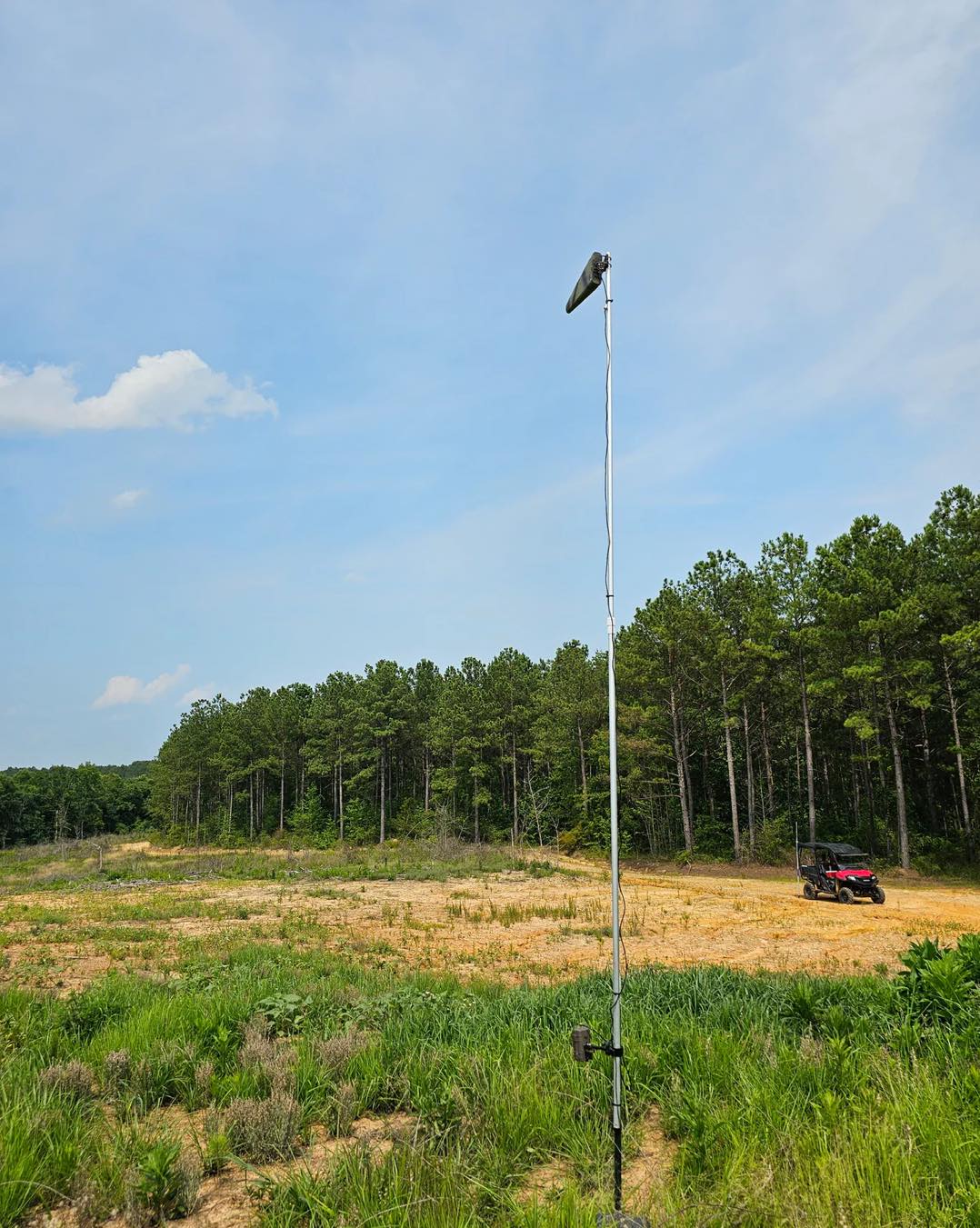Maximizing Signal Strength for Better Results
Cellular trail cameras have revolutionized the way we monitor wildlife and track movement in remote locations. However, one common challenge that users face is ensuring a strong and reliable signal for their cameras to function effectively. In this article, we will explore the importance of cellular trail camera signal strength and how you can improve it using a high gain directional antenna.

Cellular trailcams like Tactacam Reveal, WiseEye, Spartan, Black Gate, Cuddeback, Stealth Cam and Browning all do a great job pulling in weak cellular signal in remote locations. Often, they do a better job than our phones due to their external antenna. But given the nature of our hobby, we often find ourselves in remote locations with minimal signal that wreaks havoc with cell cam performance. Weak signal will greatly affect battery life, transmit speed and even image upload reliability. Even though I made a video demonstrating setting up a directional antenna for cellcams a couple years ago, this is a long overdue blog and one I am excited to finally finish. I have also since changed some recommendations and strategies for my customers to make it a more reliable process. The main one being I no longer recommend using an app to locate the tower. You can if you like but with 5g available more often these days I find the app often will show you the wrong direction. Sometimes your phone will be connected to a different tower than the camera selects because of these issues. I have listed the steps I prefer and recommend to my customers. The feedback has been great with customers having greater first-time success.
Understanding How Signal Strength Affects Cellular Trail Camera
Cellular trail cameras rely on a strong signal to transmit images and data to your device or cloud storage. The signal strength is measured in decibels (dB) and can vary depending on factors such as distance from the nearest cell tower, elevation changes, obstructions like trees or buildings, and interference from other electronic devices. The better the signal connection the better the camera performance from the transmitter and receiver side of things. Upload reliability is affected, battery life, firmware updates and so on. I have a video on YouTube where I demonstrate the effects of a weaker signal vs a stronger signal on power consumption. It was very eye opening for me. If you would like to watch it, you can do so by clicking here. Signal vs battery performance video. Don’t get hung up on bars though, they aren’t really an accurate way of measuring signal quality. They are a combination of signal strength (RSRP) and signal quality (SINR). You can have 1 bar and great data rates or 5 bars and horrible data rates. I see this often at our new shop. I have a great 5g signal, but the data rate is so poor that 5g devices won’t do the simplest online tasks. The bars are useful to find the tower but may not reflect the improved connection provided by the antenna. For example, I have seen cases where even once adding the antenna, signal bar strength didn’t change much. However, because of the improved connection provided by the antenna, the camera, a Spartan Golive, would perform live streaming where previously with the factory antenna, it would not.
Antenna Design Type
For the most part there are two types of antennas most used for cellular trail cameras. But before we talk about that, let me address the word "booster antenna". The word booster implies some sort of electronic amplifier and certainly there are cellular booster systems out there. These would be considered "active" and incorporate an antenna as well as an actual signal booster. Even though the common description is booster antenna when customers are asking for a signal improving antenna, I wanted to clear the air and let you know that the antennas in this discussion are from an industry pov, passive in nature and do not have any powered circuit to boost signal. The main two design types are omni-directional, radiates and receives from all directions, and directional which focuses its energy in one direction. Herd 360 does offer an omni-directional that works well for what it is. You can find that here. Omni-Directional Antenna I have had numerous customers report an improvement in upload reliability and even signal improvement due to the added height they were able to achieve when mounting but for the absolute best performance, especially in fringe areas, the directional will be best so that will be our topic of discussion.
Why a High Gain Directional Antenna?
A high gain directional antenna is designed to focus and amplify the signal in a specific direction, providing a more powerful and reliable connection for your cellular trail camera. By using a high gain directional antenna, you can boost your camera's signal strength and improve its performance in areas with weak or fluctuating signals. I read an article once that compared an antenna to a candle in a dark room. Picture it in the center of the room. It illuminates in all directions, but its range is limited. This would be how an omni-directional antenna performs. Now imagine putting a mirror up close to the flame. You can imagine how one side of the room opposite the mirror will be more illuminated from the reflection of the flame while the area on the back side of the mirror is now blocking the light and is darker. I love this illustration because it gives you an easy understanding of how the effects of a directional antenna work.
I started using directional antennas back in the 80s and the benefits were significant over omni directional designs. I had a 5 element Yagi beam mounted 85 ft in the air. It was around 17ft long and if I remember correctly the rear reflector element was around 9-12 feet long. It was huge but that was the design needed for the frequency band. I could rotate it around because of the electric motor it was mounted with and could transmit and receive great distances but only in the direction it was pointed, compared to omni-directional antennas in the same setup. Cellular trail cameras are not that much different than the transmitter radios I used then. Because a cellular device is nothing more than a sophisticated radio that transmits and receives on a given set of frequency bands and me being the tech nerd diy guy I am, of course I was going to see what improvements I could make.
The frequency range for the yagi antenna I used back in the 80s was considered HF or High Frequency. Cellular bands fall into the Ultra High Frequency range. Thankfully this also means antenna designs are much smaller and more manageable so we can easily use and benefit from a directional cellular antenna. One obstacle is that there is a wide range in the frequencies used by each carrier and even within one carrier on different towers so antenna type must be wider banded than the typical yagi antenna is capable of. When cellcams hit the market around 2010 they were of course primitive, and carriers were limited basically to ATT as a non-supported device. Signal strength in rural areas also suffered so I started exploring the antennas I knew would make an improvement to help me use them in the signal fringe areas where I was hunting. I tried the typical yagi design but, because of the narrower band width, the results weren’t always good. Today the directional we sell at Herd 360 is a wide-band design and covers all the cellular bands with good signal gain across the spectrum. Check out our antennas.
Warning about advertised Antenna Gain
Measured in dbi or dbd, without getting super complicated, antenna gain is the measurement of how effectively signal is transmitted in a particular pattern or direction. Search ebay or amazon and you will see antennas boasting dbi numbers all over the place and more times than not they are extremely exaggerated. A small antenna that mounts on a device does not have high gain. In fact, they typically have negative gain. Mostly these are from Chinese direct sellers who have zero accountability to the buyer or the FCC. Just searching for one type can show you a wide range of gain numbers for the same antenna. Our directional at its best will be roughly 11dbi and the omni it at best around 4dbi but these numbers vary across the different frequency bands. It’s best to know where your seller is based out of. While our antennas are manufactured overseas, because frankly there is no affordable US manufacturing in this field, we still strive to provide the most accurate specifications and tested designs. Recently I had an antenna from overseas offer me a directional that looked identical to the ones I sell at a much lower price. I agreed to let them send me a sample. I disassembled it and even though the design was similar, the construction quality was horrible. Selling it would certainly lead to unhappy customers. I never even hooked it up for signal testing. It just didn’t meet my specifications. I also experienced the same with the omni directional I sell. I found one on amazon that was very similar. I disassembled it and found a sub-par construction. In short, cheap ain’t always good. Know your vendor. At Herd 360 you can always know we stand behind what we put our brand on.
Maximizing Signal Strength for Better Results
By investing in a Herd 360 high gain directional antenna for your cellular trail camera, you can significantly improve its signal strength, connection reliability and overall performance. With a stronger signal, you will have better battery life, more consistent and reliable image uploads, receive more real-time notifications, and enhance your wildlife monitoring experience.
Don't let poor signal quality hinder your trail camera's performance. Upgrade to a high gain directional booster antenna from Herd 360 today and unlock the full potential of your cellular trail camera system. Herd 360 Directional High Gain Antenna.
How to Install a High Gain Directional Antenna
Installing a high gain directional antenna for your cellular trail camera is a straightforward process. Ideally you would have some sophisticated meter, but they are expensive so using a simple method we have come up with you can effectively set it up in the field without any extra specialized equipment. Simply attach the antenna to the camera's external antenna port and point it towards the nearest cell tower for optimal signal reception. Make sure to secure the antenna in place to prevent it from shifting or falling. For a more detailed instruction you can download our setup guide that is included with the directional antennas we sell.
You can view the instructions here, Instructions, or download them at the next provided link. Just click this link to download. DIRECTIONAL ANTENNA SETUP GUIDE
Some of my first setups back around 2013 or 2014. They worked better than factory but weren't great.


We have help videos on our Herd 360 Youtube Channel https://www.youtube.com/@herd3609/videos
Stay up to date by subscribing to our Youtube, Instagram and Facebook Herd 360 pages.
Thank you for trusting in Herd 360 for all your trail camera needs and solutions.
Email: us at mike@herd360.com
Phone: 803-341-0938 text/call
Website: herd360.com

